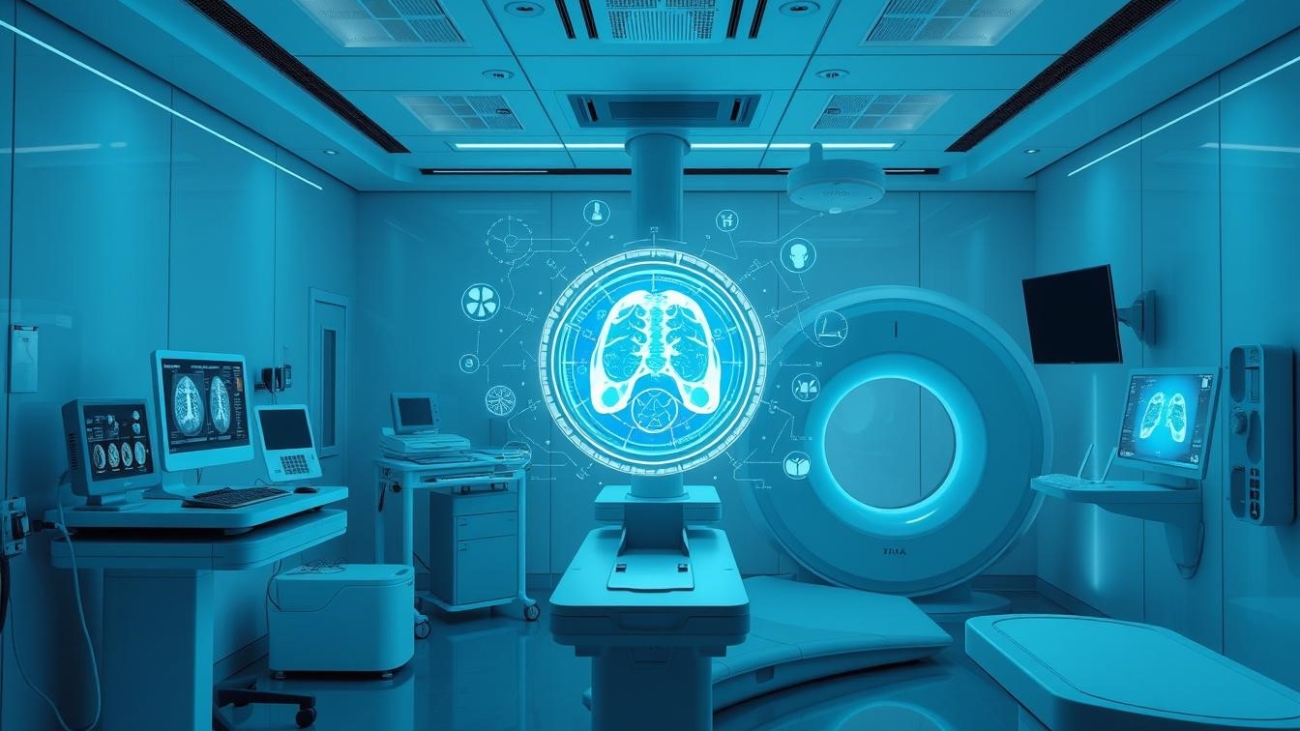The integration of Artificial Intelligence (AI) in various fields has revolutionized numerous industries, and radiology is no exception. AI-powered imaging is swiftly becoming a critical tool for radiologists, transforming the way they diagnose and treat patients. This article delves into how AI is reshaping radiology, enhancing precision, efficiency, and ultimately patient care.

The Rise of AI in Radiology
Radiology, traditionally reliant on the expertise and experience of human professionals, is now experiencing a technological evolution. AI in radiology applies advanced algorithms and machine learning to analyze medical images with impressive accuracy. As these technologies evolve, their capabilities to detect abnormalities, predict diseases, and assist in clinical decisions continue to improve.
Enhancing Diagnostic Precision
One of the most significant benefits of AI-powered imaging is its ability to enhance diagnostic precision. Radiologists can use AI to detect minute details within medical images that might be overlooked during manual examination. For instance, AI algorithms can identify subtle changes in tissue that could signal the early stages of cancer or other serious conditions.
By integrating AI into their workflows, radiologists are now able to provide more accurate diagnoses. This not only improves patient outcomes but also reduces the likelihood of misdiagnoses, leading to more targeted and effective treatments.
Streamlining Workflow and Efficiency
Another transformative impact of AI in radiology is the streamlining of workflow and efficiency. Traditionally, radiologists spend extensive time analyzing images, reporting findings, and managing data. AI algorithms can significantly reduce this burden by rapidly processing and interpreting vast amounts of imaging data.
Automating Routine Tasks
AI-powered imaging systems can automate routine tasks such as image analysis, quantification, and even initial interpretations. This allows radiologists to focus more on complex cases that require their expert judgment. Furthermore, AI tools can prioritize cases based on urgency, ensuring that critical patients receive timely attention.
Reducing Radiologist Burnout
With the increasing demand for medical imaging services, radiologists often face high workloads, which can lead to burnout. AI’s ability to handle repetitive and time-consuming tasks alleviates some of this pressure, enabling radiologists to maintain a better work-life balance while continuing to deliver high-quality care.

Improving Patient Outcomes
The ultimate goal of integrating AI in radiology is to improve patient outcomes. AI-driven tools provide radiologists with valuable insights that empower them to make more informed decisions. These advancements contribute to earlier detection of diseases, personalized treatment plans, and overall improved patient care.
Early Detection and Treatment
Early detection is crucial for effective treatment of many diseases. AI algorithms can analyze medical images with a high degree of accuracy, identifying anomalies that may be invisible to the human eye. By catching diseases in their early stages, patients have a better chance of successful treatment and recovery.
Personalized Medicine
AI in radiology also plays a significant role in the advancement of personalized medicine. By analyzing individual patient data, including medical images, genetic information, and clinical history, AI can help tailor treatment plans to each patient’s unique needs. This personalized approach leads to more effective therapies and better patient outcomes.
Addressing Challenges and Ethical Concerns
While the benefits of AI in radiology are substantial, there are also challenges and ethical concerns that need to be addressed. Ensuring the accuracy, reliability, and fairness of AI algorithms is paramount. Radiologists and AI developers must collaborate closely to validate these technologies and ensure they meet clinical standards.
Data Privacy and Security
The integration of AI in radiology necessitates the handling of vast amounts of sensitive patient data. Protecting this data from breaches and ensuring patient privacy is a critical concern. Strict data security measures and compliance with regulations are essential to maintain trust in AI-powered imaging systems.
Ensuring Fairness and Reducing Bias
AI algorithms are only as good as the data they are trained on. To avoid biases, it is crucial to use diverse and representative datasets during the training phase. Continuous monitoring and assessment of AI systems help identify and rectify any biases that may arise, ensuring equitable care for all patients.
FAQs
How does AI assist radiologists in their daily tasks?
AI assists radiologists by automating routine tasks, such as initial image analysis and quantification. It helps to quickly process large volumes of imaging data, prioritize cases, and identify abnormalities that may be missed by the human eye. This allows radiologists to focus on complex cases and improve diagnostic accuracy and efficiency.
Can AI in radiology replace radiologists?
While AI significantly enhances the capabilities of radiologists, it is not intended to replace them. AI serves as a powerful tool that supports radiologists by providing additional insights and reducing their workload. The expertise and clinical judgment of radiologists remain essential for accurate diagnoses and patient care.
What are the ethical concerns associated with AI in radiology?
Ethical concerns include data privacy and security, ensuring fairness, and reducing biases in AI algorithms. Protecting sensitive patient data and using diverse datasets for training AI systems are crucial for maintaining trust and delivering equitable care.
How does AI improve patient outcomes in radiology?
AI improves patient outcomes by enhancing early detection of diseases, providing accurate diagnoses, and enabling personalized treatment plans. These advancements lead to more effective therapies, timely interventions, and overall better patient care.
What is the future of AI in radiology?
A5: The future of AI in radiology looks promising, with continued advancements in technology and increased integration of AI tools in clinical practice. Ongoing research, collaboration between radiologists and AI developers, and addressing ethical concerns will further enhance the potential of AI-powered imaging.


Add a Comment